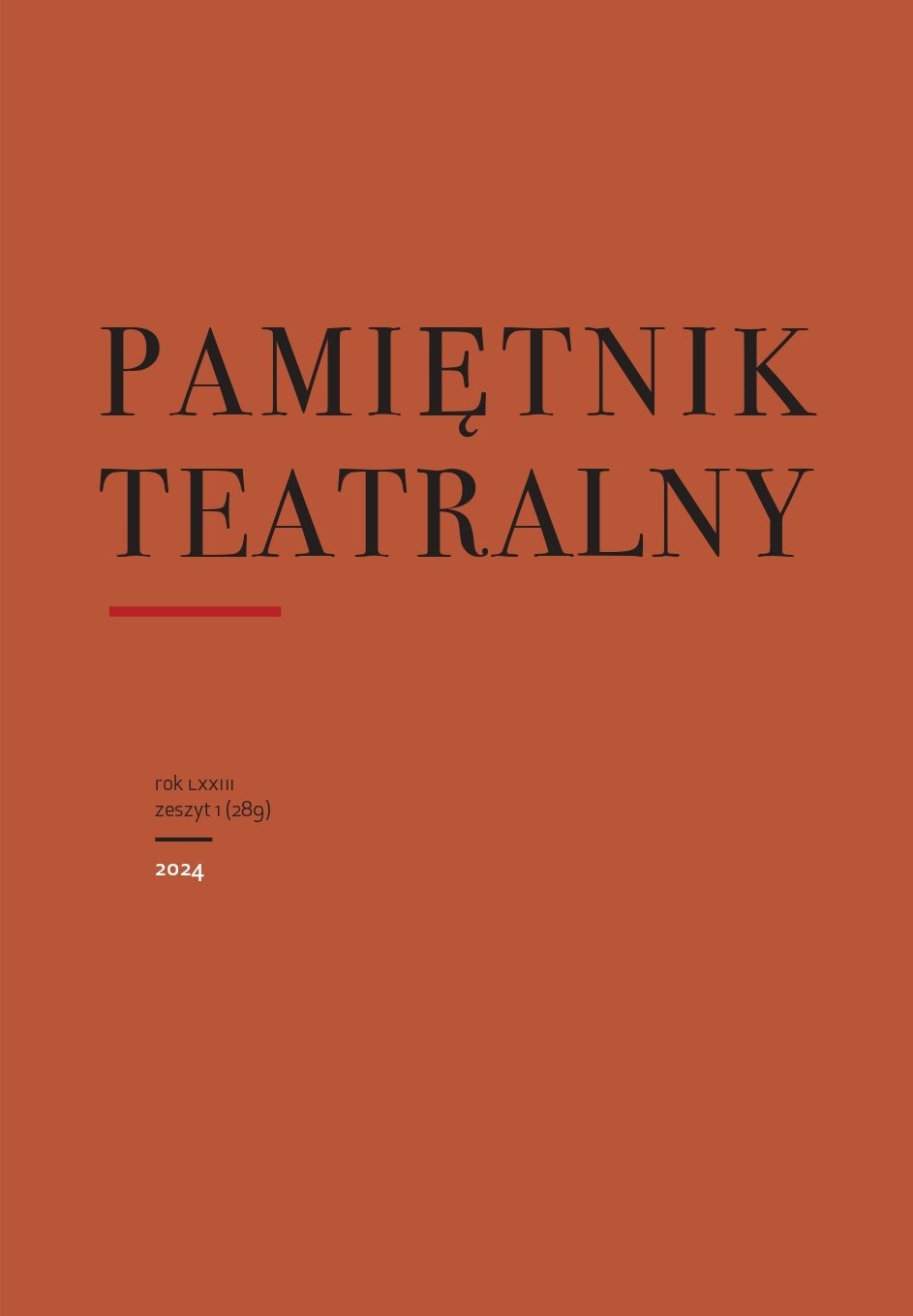Mińkowce: A Podolian «Hamlet» and Harvest Feasts
Jarosław Komorowski
Institute of Art, Polish Academy of Sciences (Poland)
https://orcid.org/0000-0002-4440-8695
Abstract
Mińkowce, a town in the far-away Podolia, became a part of history of the Polish theater as the place where the first Polish edition of Shakespeare’s Hamlet, as translated by Jan Nepomucen Kamieński based on Friedrich Ludwig Schröder’s adaptation, was published in 1805. Since 1790, Mińkowice, along with an expansive landed estate of 20 villages, had been owned by Ignacy Ścibor Marchocki. The estate owner chose not to acknowledge the partitions of Poland and established his own “Mińkowice state” sometime after 1795, strongly emphasising its independence from the Russian Empire; he even set up his own boundary markers. He released his peasants from the bond of personal serfdom and laid down laws in the spirit of the Enlightenment; he founded a school, printer, and “music academy.” At the same time, Marchocki flaunted his power and role of “the protector of the people” with extravagant ceremonies, which earned him the reputation of an eccentric or even madman. In reality, just like in Hamlet’s case, it was probably Marchocki’s way of concealing his real intentions from Russian civil officers and neighbours disapproving of social reform. Marchocki established two “state” holidays in his landed estate, the New Year and harvest festival, which was held on 15 August, on the Feast of St Mary the Virgin. The latter was a religious feast combined with a grand, all-day-long spectacle put on by Marchocki for 30 consecutive years according to an increasingly complex and theatrical scenario. As years went by, the basic scheme (a procession after the Mass, a feast in front of an outdoor altar, symbolic ploughing, an apotheosis of the goddess of harvest) became more and more elaborate. Pieces of occasional architecture and stage set, special costumes, and props appeared. A tribute to a personified goddess of harvest was the final and part of the feast. Eyewitnesses started calling the personified goddess by the Roman name of Ceres, which brought onto Marchocki absurd accusations of paganism and idolatry, which, however, did not make him budge, as he kept organising the unusual celebrations until the end of his life.
Keywords:
theater history, Polish theater 1800-1900, court festivalsReferences
Aftanazy, Roman. Dzieje rezydencji na dawnych kresach Rzeczypospolitej. T. 9. Województwo podolskie. Wrocław: Zakład Narodowy im. Ossolińskich, 1996.
Google Scholar
Estreicher, Karol. Bibliografia polska XIX stulecia. Kraków 1876.
Google Scholar
Got, Jerzy. Na wyspie Guaxary: Bogusławski i teatr lwowski 1789–1799. Kraków: Wydawnictwo Literackie, 1971.
Google Scholar
Przeździecki, Alexandr. Podole, Wołyń, Ukraina: Obrazy miejsc i czasów. Wilno 1841.
Google Scholar
Sawrymowicz, Eugeniusz. Kalendarz życia i twórczości Juliusza Słowackiego. Wrocław: Zakład Narodowy im. Ossolińskich, 1960.
Google Scholar
Szaszor, Bożydar. „Ignacy hr. Ścibor Marchocki: Opowiadanie”. Przegląd Europejski naukowy, literacki i artystyczny IV (1863).
Google Scholar
Zwierzyński, Leszek. „Ladawa – próba fenomenologii miejsca w poezji Juliusza Słowackiego”. W: Geografia Słowackiego, redakcja Dorota Siwicka i Marta Zielińska. Warszawa: Instytut Badań Literackich PAN, 2012.
Google Scholar
Authors
Jarosław KomorowskiInstitute of Art, Polish Academy of Sciences Poland
https://orcid.org/0000-0002-4440-8695
Jarosław Komorowski - Professor in the Institute of Art, Polish Academy of Sciences, Editor-in-Chief of Pamiętnik Teatralny (2015-2019)
Statistics
Abstract views: 360PDF downloads: 156
License
Copyright (c) 2017 Jarosław Komorowski

This work is licensed under a Creative Commons Attribution 4.0 International License.
The author grants a royalty-free nonexclusive license (CC BY 4.0) to use the article in Pamiętnik Teatralny, retains full copyright, and agrees to identify the work as first having been published in Pamiętnik Teatralny should it be published or used again (download licence agreement). By submitting an article the author agrees to make it available under CC BY 4.0 license.
From issue 1/2018 to 3/2022 all articles were published under a Creative Commons license CC BY-NC-ND 4.0. During this period the authors granted a royalty-free nonexclusive license (CC BY-ND 4.0) to use their article in Pamiętnik Teatralny, retained full copyright, and agreed to identify the work as first having been published in our journal should it be published or used again.
Most read articles by the same author(s)
- Jarosław Komorowski, The School Years of Daniel Kurtz , Pamiętnik Teatralny: Vol. 67 No. 4 (2018)
- Jarosław Komorowski, Małgorzata Bruder and Janusz Degler «European Theatre Buildings and Interiors on old Postcards from Janusz Degler’s Collection»: Book review , Pamiętnik Teatralny: Vol. 66 No. 1/2 (2017)
- Jarosław Komorowski, Volhynian Theatres: Supplements and Notes , Pamiętnik Teatralny: Vol. 66 No. 4 (2017)
- Jarosław Komorowski, ‘It Is Pronounced Shek-speer’: For Master William on the Quadricentennial of His Demise , Pamiętnik Teatralny: Vol. 65 No. 3 (2016)









